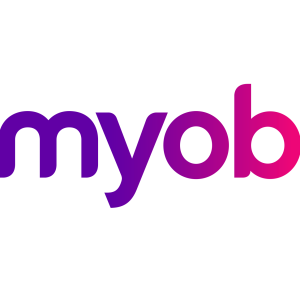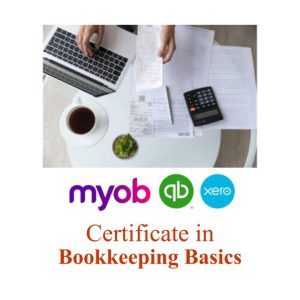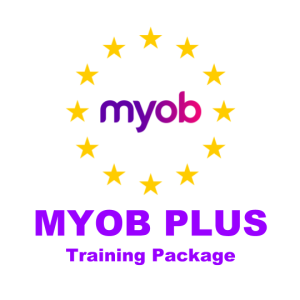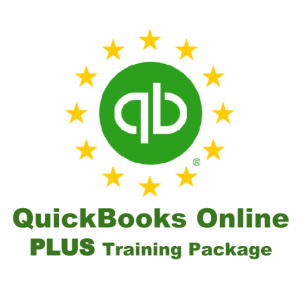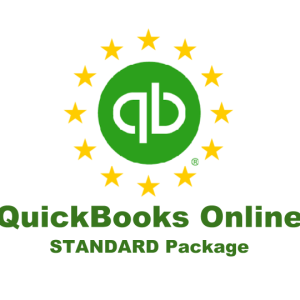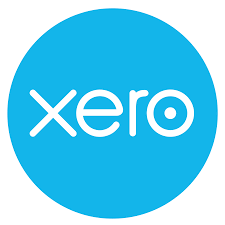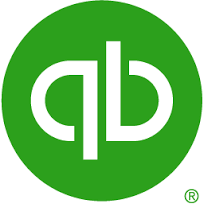Bookkeeping and Accounting for Small Business
Good bookkeeping records and accounting management ensures information is stored correctly for the following reasons:
- Easy to find in the future
- Have a record of all your Quotes, Invoices, Purchases, Payments
- Contributes to meeting deadlines for compliance tasks like end of month, BAS and End of Financial Year
- Helps you understand any credit management tasks which need to be done (like calling customers and getting paid)
- Sets up a system that can be easily managed when you grow and take on more staff
- Makes sure you claim every tax deduction available to you
- Ensure you get accurate financial reports
- Be able to forecast, set budgets and manage cashflow
- Have financials available if you need to borrow money
- Be prepared for when you sell the business to demonstrate how it has performed over the last few years

Components of a Professional Small Business Bookkeeping System
Bookkeeping Essentials, Setup and Customisation
Even though popular accounting software uses simple terms like money owned, money owing, loans etc your accountant and any financial person will use the proper terms like Accounts Receivable, Debtors, Creditors etc so it’s good to start to get to know what these terms mean even if you don’t use them all the time.
Getting setup using bookkeeping software usually involves signing up to some accounting software, setting up your bank feeds (saves a lot of time in bookkeeper fees), setting up the products you sell and your main expenses.
Every company is different, and even two different cafes can customise their accounts differently but thankfully most modern accounting software programs give you templates to work with.
Online MYOB, Xero & QuickBooks Training Courses
-
 1 MYOB Essentials Online Beginners Training Course
1 MYOB Essentials Online Beginners Training Course -
 1a Xero Online Beginners Training Course (Data Entry, Accounts Payable/Receivable)
1a Xero Online Beginners Training Course (Data Entry, Accounts Payable/Receivable) -
 1b Xero Online Beginners Training Course (End of Month Balancing)
1b Xero Online Beginners Training Course (End of Month Balancing) -
 3 MYOB AccountRight Online GST, BAS & Financial Reporting Training Course
3 MYOB AccountRight Online GST, BAS & Financial Reporting Training Course -
 3 Xero Online Advanced Training Course
3 Xero Online Advanced Training Course -
 4 MYOB AccountRight Online Beginners to Advanced Payroll Training Course
4 MYOB AccountRight Online Beginners to Advanced Payroll Training Course -
 4 Xero Online Beginners to Advanced Payroll Training Course
4 Xero Online Beginners to Advanced Payroll Training Course -
 Cert IV in Bookkeeping & Accounting – Core Skills (MYOB and Xero)
Cert IV in Bookkeeping & Accounting – Core Skills (MYOB and Xero) -
 Certificate in Bookkeeping Introduction
Certificate in Bookkeeping Introduction -
 MYOB Accounting PLUS Training Package
MYOB Accounting PLUS Training Package -
 QuickBooks Online PLUS Training Course Package
QuickBooks Online PLUS Training Course Package -
 QuickBooks Online STANDARD Training Package
QuickBooks Online STANDARD Training Package
Design & Produce Business Documents
Accounting Documents
There are many documents and files used to manage a business and from an accounting perspective the most common documents which are created and stored by the accounting software are quotes, purchase orders, invoices, receipts, payslips, payment summaries, BAS statements and financial reports. Many of these documents are based on templates which are customised when you first setup the software, while others can be modified to suit your specific information requirements.
Office Administration Documents & Files
Many other documents are created using Office Productivity Software Applications like Microsoft Office, Google G Suite etc. These documents can include:
- Price lists, special offers and sales flyers (Microsoft Word)
- Terms and conditions and application forms (Microsoft Word or WordPress websites)
- Credit application forms and order forms (Microsoft Word)
- Presentation files (Microsoft PowerPoint) and proposals (Microsoft Word)
- User manuals, procedures manuals (Microsoft Word)
- Letters of Engagement, Professional Services Agreements
File Management of Business Documents
If you work within a business office environment you’ll probably have an office network often referred to as a LAN (Local Area Network) and different drives will be used for different types of files. If you work in the digital industry you’ll find that more and more files are shared in what are referred to as WAN’s (Wide Area Networks) using tools like
- Dropbox,
- Google G Suite and
- Microsoft Office 365.
It’s also common these days to have several team members working on business documents at the same time and from different locations and this is called collaboration. This introduces the importance of project plans and other collaboration tools like VoIP, Screen sharing and group communication tools.
With this growing flexible way of remote working issues which become important are:
- Who should use certain files
- Project milestones and deadlines
- Proof reading and business templates and styles
- How documents should be named for version control and purpose
Read more about Industry requirements for Designing & Produce Business Documents
Plan, Prepare and Develop Complex Spreadsheets
Due to their grid structure of rows, columns, cells, tabs and pages spreadsheets can start of very simple but get really complicated very quickly when you start to use advanced spreadsheet tools like 3D functions, cell references and table linking. Spreadsheets are used to create business documents at every department of the organisation from marketing and sales, office admin and finance to products office files like:
- Price lists with margin, markup and profit margin information
- Marketing and Sales forecasts based on the sales funnel projections
- Detailed cost analysis for projects
- Client databases from CRM’s, accounting software, newsletters etc
- Financial reporting
Common Spreadsheets skills
- Using functions and formulas
- Link calculation fields to larger consolidated reports
- Using absolute and relative cell referencing
- Format cells to present information professionally and
- Print and Presentation styles according to organisation requirements
- Importing and manipulation data based on scenarios
- Use graphs and charts to present information graphically
Read more about Industry requirements for developing and using complex spreadsheets
MYOB & Xero Training Course Catalogue

Short Courses online can be completed at your own pace with support when you need it.
You can achieve their career goals for office admin and accounting jobs with a short course online and even start a business performing bookkeeping (but being mindful about BAS Services) with Advanced Certificate Courses in MYOB, Xero and QuickBooks Online.
Nationally Accredited Cert IV Bookkeeping & Accounting Training Courses
Develop & Work with Policies and Procedures to be Effective in the Accounting Industry
The nature of working in the accounting industry in Australia is more rigid than in the past because of new bookkeeping regulations. Certain tasks can only be performed by registered and certified practitioners so it is important for all team members to be aware of other team members roles and responsibilities as well as the needs of each client.
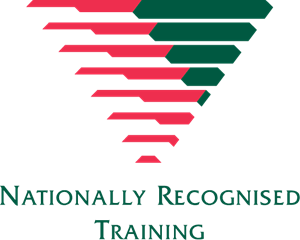
When a BAS Agent, bookkeeper or accountant are engaged to perform bookkeeping services they need a Professional Services Agreement or Letter of Engagement. These documents are a contract which outlines specific roles and charges and highlights type of work and who performs those tasks.
Deliver and Monitor Customer Service
Important aspects of being effective in the accounting industry include:
- Clear communication with key stakeholders
- Clarify client needs and expectations who in your organisation can perform these tasks
- Understanding roles and responsibilities within the bookkeeping organisation
- Identify complimentary services
- User Referral networks to identify individuals to refer to
- Explore potential Joint Ventures for complimentary services
- Measure service performance based on feedback and recommendations
- Understand how to discuss and provide support based on feedback and recommendations
- Understand ethical responsibilities and how to apply them
Compliance Requirements and CPD
It’s important for Registered BAS and Tax agents to undergo regular up-skilling to keep abreast of changes in legislation, the industry and the different tools available and in use in the industry. This is often referred to as both Continuing Professional Education (CPE) or Continuing Professional Development (CPD) and although it’s relatively for bookkeepers it is well known and established in more complex fields like the medical industry for nurses and doctors to keep up with rapid changes.
The purpose is to ensure that you develop and maintain your own skills and competency
Continuing Education includes:
- Research legislative, statutory, regulatory and industry requirements
- Being aware of compliance requirements where to obtain support materials
- Learning and understanding software designed to help industry practitioners in their work activities
- Manage & maintaining systems to be compliant
- Understand systems to support clients in their compliance
- Develop processes and procedures to perform daily activities that maintain compliance
- Review and modify processes and procedures as required to maintain compliance
- Seek professional development opportunities to fulfill your needs
- Set goals and achieve them in an agreed time-frame
Being Productive and Proactive
- Identify goals and determine tasks and other resources needed to achieve them
- Work productively by yourself according to goals and milestones
- Collaborate with others in a team to complete your work tasks and achieve milestone goals
- Understand how a Project Plan manages resources, time and priorities to achieve strategies and goals
- Understanding how to deliver results according to a project plan
Managers and Program Directors
At every level there is a need to manage the expectation and outcomes performed in an organisation but for Managers and Program Directors the driving force once systems are in place is to ensure that new recruits and Accounting Interns follow the correct guidelines to get up to speed quickly. This includes training and guidance in systems and procedures but also includes tools and resources to go through the continuing education process.
Managers and Program Directors have the balancing act of ensuring that junior and mid level bookkeepers deliver their work according to the organisations procedures to please clients and work alongside senior bookkeepers, BAS Agents and accountants. Skills involved include:
- Identify and regularly review professional development goals
- Provide feedback to team members
- Encourage and reward individual and team efforts
- Help team members adapt to changes in technology
- Ensure team members comply with competency, authorisation and licensing requirements
- Support teams to identify and resolve problems to improve performance
Read more about Industry requirements for working in a Professional Bookkeeping Practice
Understand and Implement Credit Management Systems
Good credit management is important to every organisation and when implemented well ensure a profitable, productive and efficient business where all parties understand the requirements and work in harmony for mutual success. Although credit management covers assets and liabilities like cash at bank, receivables, inventory & payables it directly effects cash-flow and profitability.
Credit is often extended to clients because it would be impossible to do business without it but risk and cost arise when established credit terms are stretched or broken. The role of anyone involved in credit management is to understand risks from an individual client to an entire customer and supplier base perspective and be able to manage or participate in the management of that risk.
Transaction aspects of Credit Management include:
- Understanding aspects of the chart of accounts which relate to credit risk
- Establish debtors and creditors as needed
- Establish debtor and creditor subsidiary ledgers (larger organisations)
- Process invoices, adjustment notes and general ledger transactions
- Raise invoices to debtors and allocate invoices to creditors
- Correctly code and process source documentations
- Process and bank payments from debtors and to creditors
- Understand processing in accordance with company policy and procedures
- Make adjustments and allocate to correct invoices or purchases
- Raise credit notes for adjustments to invoices
- Enter transactions into general ledger
- Manage contra entries, including liaise with relevant persons to verify contra deals
- Identify and process bad debts
Communicating & Credit Management
Credit terms are normally communicated with clients at the time of quoting or transacting and often within the paperwork and processes of the organisation. Thereafter it is managed with each order, modification of each order and return or refund. These adjustments need to be made quickly and precisely and documented correctly to ensure the resultant information is available at any time it is needed.
Important aspects of communicating credit management includes:
- Make written and verbal contact with clients who are near credit term limits
- Negotiate and management payments with clients breaching credit terms
- Report to senior and management staff regarding credit management conversations with clients
- Liaise with relevant persons to report and verify bad debt if negotiations with debtors do not produce successful outcomes
- Review activities and correspondence with debtors to determine adequacy of outcomes
- Start processes to collect monies including initiation of legal action
- Manage debt recovery
- process bad debts to update debtors and general ledgers
Reporting and Making Recommendations about Credit Management
- Prepare and produce reports and trial balance
- Reconcile debtors and creditors, and produce credit management reports
- Produce trial balance and present reports with explanations if required
- Complete reporting procedures and appropriate documentation
Establish and Maintain a Payroll System
1. Establish payroll requirements
1.1 Apply knowledge of relevant legislation in relation to employment standards, and other legislative requirements in regards to payments
1.2 Seek instruction from authorised parties in relation to relevant state and modern awards regarding details to be set up within payroll system for individual employees
1.3 Establish payroll set-up for salary packaging
1.4 Assess scope of payroll services BAS agent can provide and identify need for independent expert advice providers
2. Record payroll data
2.1 Ensure payroll system includes complete and accurate employee data
2.2 Review payroll data and clarify discrepancies with designated persons
2.3 Enter employee pay period details, deductions and allowances in payroll system in accordance with source data
2.4 Calculate payment due to individual employees to reflect standard pay and variations in accordance with employee source data
3. Prepare and process payroll
3.1 Conduct payroll preparation within designated timelines in accordance with organisational policy and procedures
3.2 Calculate, record and reconcile employee in accordance with legislative requirements
3.3 Reconcile total payments for pay period, and review and correct irregularities or refer them to designated persons for resolution
3.4 Obtain authorisation of payroll and individual pay advice in accordance with organisational requirements
3.5 Make arrangements for payments in accordance with organisational and legislative requirements
3.6 Produce, review and store payroll records in accordance with organisational policy and security procedures
4. Handle payroll enquiries
4.1 Respond to payroll enquiries in accordance with organisational and legislative requirements
4.2 Provide information in accordance with organisational and legislative requirements
4.3 Refer enquiries outside area of responsibility or knowledge to designated persons for resolution
4.4 Provide additional information or complete follow-up action within designated timelines in accordance with organisational policy and procedures
5. Maintain payroll
5.1 Maintain all information and record keeping relating to payroll function in accordance with relevant legislation and regulations
5.2 Produce and reconcile month-end and year-end checklists to ensure compliance with relevant legislative and management deadlines
5.3 Update records and systems in line with salary reviews and other changes in employment status
5.4 Establish back-up and disaster recovery systems
5.5 Generate and distribute payroll reports in line with organisational policy
5.6 Extract and apply business activity statement (BAS) and instalment activity statement (IAS) data in accordance with relevant legislation and regulations
Learn more about Establishing and Maintaining a Payroll System
Prepare Financial Reports
1 Maintain asset register
1.1 Prepare a register of property, plant and equipment from fixed asset transactions in accordance with legislative and organisational policy and procedures
1.2 Determine method of calculating depreciation in accordance with organisational requirements
1.3 Maintain asset register and associated depreciation schedule in accordance with organisational policy, procedures and accounting requirements
2 Record general journal entries for balance day adjustments
2.1 Record depreciation of non-current assets and disposal of fixed assets in accordance with organisational policy, procedures and accounting requirements
2.2 Adjust expense accounts and revenue accounts for prepayments and accruals
2.3 Record bad and doubtful debts in accordance with organisational policy, procedures and accounting requirements
2.4 Adjust ledger accounts for inventories, if required, and transfer to final accounts
3 Prepare final general ledger accounts
3.1 Make general journal entries for balance day adjustments in general ledger system in accordance with organisational policy, procedures and accounting requirements
3.2 Post revenue and expense account balances to final general ledger accounts system
3.3 Prepare final general ledger accounts to reflect gross and net profits for reporting period
4 Prepare end of period financial reports
4.1 Prepare revenue statement in accordance with organisational requirements to reflect operating profit for reporting period
4.2 Prepare balance sheet to reflect financial position of business at end of reporting period
4.3 Identify and correct, or refer errors for resolution in accordance with organisational policy and procedures
Learn more about Preparing Financial Reports

